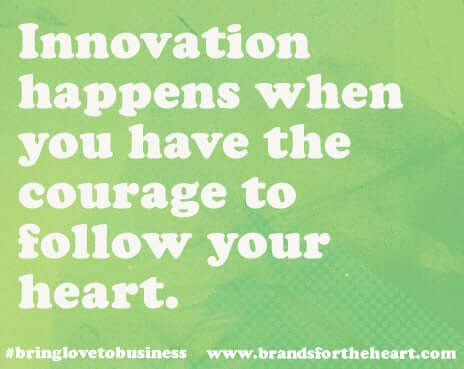Need A Big Change In Your Business?
Do you feel called towards a big change in your business?
Maybe you haven’t been as successful as you’d like or the market has changed and you’re feeling a different direction for your business is in order.
Here are some ideas to revitalize your business model and brand:
1. Align your business model with a higher purpose
If you’re not feeling fulfilled by your business, it’s possible you’re giving that vibe off to your customers. So why not add more meaning to your business by aligning it with a cause that you and your customers are passionate about?
You may be wondering if it’s worth it to align your business with a good cause? A global survey revealed that 55% of the respondents are willing to pay more to buy from companies that are aligned with positive social and environmental impact. The increase from 45% in 2011, and 50% in 2012, prove that the role of social awareness is becoming more important in the consumer’s purchasing decision. Given that the essence of business is to serve customer wants and needs, this growing trend should not be ignored.
This is the concept behind the business model of TOMS shoes, with their buy-one-give-one business model. TOMS demonstrates to us how it’s possible for a for-profit business to thrive while doing good in the world. In 2013, the company’s revenue was estimated at nearly $250 million. And since the company was founded in 2006, a staggering 35 million pairs of shoes have been donated to children in need.
2. Adopt technology into the core of your business model
Technology plays a pivotal role in society. It is a force that businesses cannot ignore, and has become a game changer in the positioning of any service or product. Your business (or you personally, for that matter) may not be technologically-inclined, but that doesn’t mean that you can’t embrace it!
Technology can help differentiate your brand especially if you’re using it in a disruptive manner. Remember the days when music was purchased in the form of CDs? Fast forward to 2003, when Apple introduced iTunes, and along with that a new way of purchasing music. The iTunes music store allowed users to purchase individual songs, rather than having to buy a complete album. A differentiating feature of songs sold on iTunes was their ability to be played on mp3 players. As a result, iTunes became (and still remains) a major game changer in the lucrative industry of digital music.
3. Explore a different ideal client
Maybe it’s time for a change: not in the “what” you do or sell but in the “who” you sell it to. Re-evaluate your ideal customer and explore how a new customer segment could align your business for growth. The market is always changing, so it makes sense if your growth has slowed down to take a step back and reframe the target market.
We saw this strategy in action in 2014, when Dell recognized that household computer-purchasing decisions were largely driven by college and high-school students. They kept that consideration in mind and in 2014 released their Inspiron 11 3000, a new model that was a hybrid between a laptop and tablet. The 2-in-1 model was both fun and affordably priced to target younger audiences.
This strategy was also applied by electric-car company Tesla, when they unveiled their Model S car and changed the playing field of electric vehicles back in 2008. Instead of the usual economical focus, Tesla strategically positioned themselves as luxury electric car. Although the pricing of other electric car alternatives were 2-4 times less, Tesla earned the top spot for number of electric cars sold for the first portion of 2015.
4. Focus on a specific industry segment
Create more momentum for your business when you narrow your products or services to a certain industry segment. This narrowing down of your niche segment allows your business to thrive within its chosen industry.
A bad experience with ordering floor supplies prompted co-founder Jeff Booth of BuildDirect to develop his own solution. What came out of it was an online business that took the complication out of home improvement and allowed customers to order directly from manufacturers. Today, BuildDirect is a major player in the industry of building supplies, with an estimated worth of over $350 million in early 2015.
5. Create a pop-up location for your business
For small businesses just starting, leasing a retail location and paying for the renovations of a space can be cost prohibitive. That’s why pop up shops are an excellent way of bootstrapping a traditional brick-and-mortar business while at the same time testing your concept in the market and giving you a chance to tailor your product or service to the market. A pop up shop gives you the freedom to move your business to different locations and meet your customers where they are already shopping, generating exposure along the way.
6. Innovate the way your industry charges for your products & services
Experiment with new and disruptive payment methods as innovative ways to increase your revenue stream and capture new customers. When’s the last time you rented a DVD from the nearest corner store? The world has evolved from DVD movie rentals, with companies like Netflix leading this change in the way we watch our TV.
Netflix introduced a disruptive monthly payment strategy for unlimited viewing as opposed to one-time rental fees. This company transformed payment plans and has managed to get 64 million subscribers onboard. (It’s also important to mention that Netflix adopted technology as discussed in strategy #2 above. Get creative and mix and match strategies for your business.)
7. Explore how you can incorporate the shared economy in your business
Collaborative consumption is creating a whole new kind of consumerism. It’s an emerging trend in which owners rent items through peer-to-peer services, reducing the need for people to buy them. For example: Divvy is a Melbourne-based brand that has fully adopted the concept of collaborative consumption. The idea behind it? Matching people who have available parking spaces such as garages or driveways with those in need of it.
Although it is not a new concept, technology has contributed to the success of the collaborative economy by providing us the means to access information and connect with others. In 2013, Forbes estimated the total revenues of the share economy to exceed $3.5 billion, with an expected increase of 25%.
8. Create a community movement around your brand
The future of branding and business differentiation is about making your customer the hero or heroine by offering your brand as a container to change the world in a specific way. This is achieved through a combination of aligning your brand with a higher purpose (as discussed in strategy #1 above) along with rallying a community of people who care about a greater good cause. It’s a matter of rallying a community around a common enemy and then aligning your business with that higher cause. The more specific the cause the better.
The owners of SoulCycle, for example, consider themselves to be in the business of “changing lives” rather than the fitness or indoor cycling field. Their method of teaching blends inspirational coaching with a workout, with their community of followers working towards the same goal: physical, but also mental, strength.
With each class typically going at $34 USD, it’s not like a low price is what’s reeling in avid cyclers. Instead, it’s more about the community that they’ve managed to create with their customers. SoulCycle’s IPO filing summary directly references they’re building a community; in particular, one that empowers, connects, and inspires.
Discover the 14 ingredients for Starting a Brandvolution with this step-by-step template:
9. Reimagine your business by putting your customer at the heart
Social media has shifted the power into the customer’s hands. If you are a company with good intentions, this is an opportunity to do even more good in the world, because we live in an information age and the opinion of one customer can have multiplying effects on a brand’s reputation. Customers are central to the success of a business, which is why every business decision made needs to take customers into consideration.
So what does this strategy look like in action? It’s a matter of revisiting your core brand strategy and reconsidering how your brand’s vision, purpose (or mission) and brand values relates to why your customer will care.
For some vision statement inspiration, this list of vision statements and tips could help!
Similarly, learn how to articulate your purpose using language that your clientele understands and empathizes here.
10. Co-create a new product or service with your customers
Customers play a pivotal role in the success of a product and they hold a wealth of information when it comes to innovation. So, instead of building products and services from inside the fish bowl why not get out of it and ask your customers for direct feedback and involve them in the product development process. This could be as simple as creating a poll or survey for customers to fill out.
In the case of Lay’s, their “Do us a Flavour” contest was launched whereby contestants submitted ideas for potato chip flavours. Up for grabs was a money prize, having the winning flavour developed and sold in stores, and of course… bragging rights. Starbucks has also had a lot of success with this strategy. The Frappuccino is just one of the products co-created with their customers, which in 2011 accounted $2 billion in sales and 20% of their revenues.
Innovation happens when you have the courage to follow your heart
What do you think? Any tips to share on revitalizing your brand? I’d love to hear them in the comments below!




